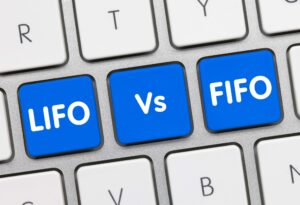
The owner of Captain Caramel’s happens to share the working capital for his store is $52,500. But then he realizes that Captain Caramel’s is located in a much bigger city (with more customers) and has been around for many years, which has allowed them to build a solid business, which Chuck aspires to do. How would Chuck compare the liquidity of his new business, opened just one month, with the liquidity of a larger and more-established business in another market?

What Ultimately Affects the Changes in Owner’s Equity?

Understanding the definition of equity is key to grasping a company’s overall financial health. It shows how much of the company’s assets are financed through owner’s funds versus liabilities. Let’s further assume that Chuck, while attending a popcornconference for store owners, has a conversation with the owner of amuch larger popcorn store—Captain Caramel’s. The owner of CaptainCaramel’s happens to share the working capital for his store is$52,500.
Financial Statement Analysis

However, the statement of changes in equity for a corporation uses a marginally altered format. Any discrepancies between the beginning and ending equity balances may indicate errors or omissions in the financial reporting process. Reconciling these balances ensures that the financial statements are internally consistent and accurate. It presents the beginning balance of equity, details the changes during the reporting period, and income summary shows the ending balance. It signifies the stability of stockholders’ equity investments by the conclusion of the recording period as revealed in the statement of financial position.
- Whether you’re a small business owner, an investor, or just someone interested in understanding the financial side of things, the equity statement is worth your attention.
- If you added correctly, you get total expenses for the month of June of $79,200.
- On the flip side, the owner’s equity statement is like a mini-biography, telling the story of how your stake in the business has evolved over a set period.
- A statement of owner’s equity is a financial statement that reports the changes in a company’s equity during a specific period, typically a fiscal quarter or year.
- A statement of owner’s equity — also called an equity statement or statement of changes in equity — is one of the four critical financial statements integral to business accounting.
- Owner’s equity is a crucial component of a company’s balance sheet and a measure of its financial health.
- It may also be known as shareholder’s equity or stockholder’s equity if the business is structured as an LLC or a corporation.
Step 7: Compute for the ending capital balance

This allows stakeholders to understand how equity has been affected by statement of stockholders equity different transactions and events, including net income or loss, dividends, capital contributions, share issuances, and revaluations. The Statement of Changes in Equity, also known as the Statement of Retained Earnings or Statement of Owner’s Equity, is a financial statement presenting changes in a company’s equity over a specific period. Revision profit and loss documented throughout the period can be offered in the statement of change in equity to the degree that they are accepted apart from the income statement as well. The statement of change in equity displays a connection between the income statement and the balance sheet of the business. The statement of changes in equity allows a business to contemplate its gain or loss for a specific period.

Why would a business need a statement of owner’s equity?
- Save time with automated accounting—ideal for individuals and small businesses.
- Sole proprietorships, partnerships, privately held companies and LLCs typically use the owner’s equity statement – also known as statement in changes in owner’s equity or statement of retained earnings.
- Finally, some people may believe that the Statement of Owner’s Equity is not a significant financial statement.
- It represents the cumulative amount that would be returned to shareholders if all assets were liquidated.
- It concludes with a closing balance, which must match the owner’s equity figure on your balance sheet for the same period.
- While it’s interesting to know how the book value of the business (and your share in it) has changed over the year, it doesn’t provide much insight for managing performance.
Alex and Bob contributed an https://www.bookstime.com/ additional $15,000 each to the business and made a draw of $10,000 each for personal expenses. Contributions from the owner increases capital, hence added to the capital balance. You’ll have your Profit and Loss Statement, Balance Sheet, and Cash Flow Statement ready for analysis each month so you and your business partners can make better business decisions.
By subtracting your liabilities from the value of your assets, you know how much your owner’s equity is. Your bookkeeper can include the owner’s equity on the balance sheet, thus allowing you to find it easily from month to month. Stock investors and analysts look at shareholder equity during their evaluation of a company’s overall financial health. Retained earnings are also part of shareholder equity, along with any capital invested into the company. As owners reinvest the profits of their business back into the business or invest additional capital to expand, that is their owner’s equity grows because the value of their business is also increasing. Analyzing these fluctuations requires an understanding of the business’s operational context.
